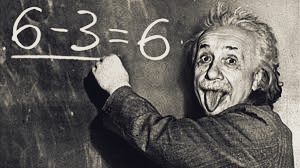We are here with a rationale question that will challenge you. Might you at any point tackle this question called the storage issue? Come on, it's an opportunity for you to test yourself.
Could it be said that you are sure about addressing rationale questions? Today we will pose you with an inquiry that will expect you to utilize your mathematical abilities. Might you want to test yourself on this question, which might appear to be threatening to numerous on the grounds that it appears to be so muddled?
We won't make derivations that the main 1% of individuals can tackle this inquiry. Since we don't have such information. In any case, assuming you answer this question accurately, we can say that you are very effective in arithmetic. So we should continue on toward our inquiry.
There are 100 understudies altogether in a school and there are 100 storage spaces in the corridor, one for every understudy. The head of the school, then again, checks whether these 100 storage spaces are shut each night and leaves the school from here on out.
Realizing that the chief checks the storage spaces each night, 100 understudies need to trick their main one day. All understudies line up before the storage spaces. The principal understudy opens every one of the storage spaces thus. From that point forward, the understudy in the subsequent column shuts every one of the storage spaces that are products of two, beginning with the subsequent storage. The understudy in the third column opens or shuts the cupboards that are products of three, beginning from the third bureau (closes if open, opens whenever shut)
The understudy in the fourth line does likewise and closes or opens every one of the cupboards that are a variety of four, beginning with the fourth bureau. This on-and-off process is performed by all understudies thus. With this framework, 100 understudies open or close storage spaces.
So how about we come to our inquiry? Which storage spaces will the chief track down open while actually looking at the storage spaces prior to leaving school at night?
How about we take some time before we get to the response?
Need to see the response with the bliss of understanding what's coming? How about we answer then, at that point:
The response to this question might sound exceptionally muddled, however, it can really be settled with straightforward rationale. For this, most importantly, it is important to figure out which understudies will open and close the storage numerically. For instance, we should investigate bureau number 24. The main understudy opened this storage, and the subsequent understudy shut it. While the third understudy opened this storage, the fourth understudy shut it once more. The fifth understudy didn't contact the storage.
You've seen the manner in which we handle a storeroom. In like manner, we can say that whether the cupboards are open or shut is connected to the multipliers of the numbers. Storage 24 in this model has been supplanted by understudies in columns 1, 2, 3, 4, 6, 8, 12, and 24.
We have perceived these, yet how would we figure out which store is open from here?
This is where the sorcery of science becomes possibly the most important factor. We realize that storage #1 will continuously remain open. Different understudies opened or shut the storage spaces with the products of their column numbers.
As indicated by this record, bureau number 2 will be shut. Since it has an even-numbered multiplier. While 1 opened this bureau, 2 shut it. Storage 3 likewise has two multipliers and must likewise be shut. Be that as it may, when we come to bureau number 4, a number with a sum of 3 multipliers, 1, 2, and 4, invites us. We see that 4 with an odd number of multipliers will stay open.
Improved? Cupboards with a much number of multipliers will stay shut, and cupboards with an odd number of multipliers will stay open. As such, when we find the cupboards with odd-numbered multipliers, the solution to the inquiry will be uncovered.
Which bureau numbers can have an odd multiplier?
For a number to have an odd number of variables, the two elements should be equivalent. These numbers are classified as "amazing square numbers". So we should simply track down the ideal square numbers. We can track down this by duplicating all numbers without anyone else. So 4 squared by 2 ought to remain open. Or on the other hand, the 3 squared 9 will stay open. The equivalent goes for 81, which is 9 squared. Since the multiplier of these numbers is odd. Thus, the quantity of the cupboards that stay open is "1, 4, 9, 16, 25, 36, 49, 64, 81 and 100".










0 Comments